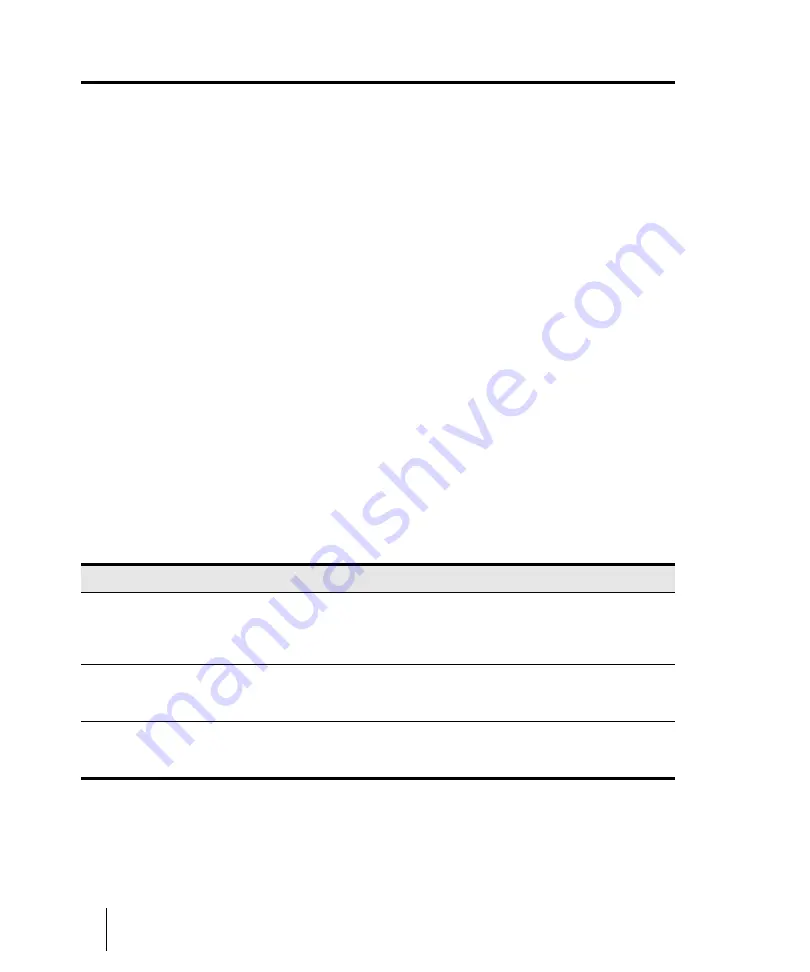
1302
Improving audio performance
Improving performance with digital audio
Improving performance with digital audio
When a project contains many tracks of digital audio or when many real-time effects are in use, your
computer may have difficulty keeping up during playback. When this occurs, you'll hear portions of
the audio drop out, stutter, or pop. Or maybe your project responds slowly to real-time effects and
volume changes. In an extreme case audio playback may stop altogether. If you experience a
dropout, a dialog box appears with suggestions for fixing the problem. This section covers
performance issues specific to digital audio, including how to get the more tracks of audio, more
real-time effects, lower latency and how to fix audio dropouts.
For more information, see:
“Getting the most out of your computer”
“Dropouts and other audio problems”
“Reduce GUI updates to improve playback performance”
Getting the most out of your computer
The maximum number of audio tracks you can expect to play on your computer depends on the
audio sample rate, the speed of your hard disk, and the speed of your computer’s CPU.
The effect of your CPU on audio track throughput is much more difficult to quantify. Throughput is
affected by the type of chip, clock speed, the number and type of real-time effects in use, cache size
and settings, and many other factors.
There are a variety of things you can do to increase the number of audio tracks and effects you can
play on your computer, as outlined in the following table.
Approach
How it works
Avoid compressed disks
If you use DoubleSpace, Stacker, or some other disk compression
system, it will slow down playback of audio tremendously. Configure
your system so that the Data directory is on a hard disk that is not
compressed.
Exit other programs
The more programs you have open, the more CPU cycles you are taking
away from your project. Exit any programs unnecessary to the task at
hand.
Refrain from other activity during
playback
If you open and close windows or do lots of editing while playback is in
progress, you may steal CPU cycles that would otherwise be used for
playback.
Table 227.
Summary of Contents for sonar x3
Page 1: ...SONAR X3 Reference Guide...
Page 4: ...4 Getting started...
Page 112: ...112 Tutorial 1 Creating playing and saving projects Saving project files...
Page 124: ...124 Tutorial 3 Recording vocals and musical instruments...
Page 132: ...132 Tutorial 4 Playing and recording software instruments...
Page 142: ...142 Tutorial 5 Working with music notation...
Page 150: ...150 Tutorial 6 Editing your music...
Page 160: ...160 Tutorial 7 Mixing and adding effects...
Page 170: ...170 Tutorial 8 Working with video Exporting your video...
Page 570: ...570 Control Bar overview...
Page 696: ...696 AudioSnap Producer and Studio only Algorithms and rendering...
Page 720: ...720 Working with loops and Groove Clips Importing Project5 patterns...
Page 820: ...820 Drum maps and the Drum Grid pane The Drum Grid pane...
Page 848: ...848 Editing audio Audio effects audio plug ins...
Page 878: ...878 Software instruments Stand alone synths...
Page 1042: ...1042 ProChannel Producer and Studio only...
Page 1088: ...1088 Sharing your songs on SoundCloud Troubleshooting...
Page 1140: ...1140 Automation Recording automation data from an external controller...
Page 1178: ...1178 Multi touch...
Page 1228: ...1228 Notation and lyrics Working with lyrics...
Page 1282: ...1282 Synchronizing your gear MIDI Machine Control MMC...
Page 1358: ...1358 External devices Working with StudioWare...
Page 1362: ...1362 Using CAL Sample CAL files...
Page 1386: ...1386 Troubleshooting Known issues...
Page 1394: ...1394 Hardware setup Set up to record digital audio...
Page 1400: ...1400 MIDI files...
Page 1422: ...1422 Initialization files Initialization file format...
Page 1463: ...1463 Misc enhancements New features in SONAR X3...
Page 1470: ...1470 Comparison...
Page 1518: ...1518 Included plug ins Instruments...
Page 1532: ...1532 Cyclone Using Cyclone...
Page 1694: ...1694 Beginner s guide to Cakewalk software Audio hardware sound cards and drivers...
Page 1854: ...1854 Preferences dialog Customization Nudge Figure 518 The Nudge section...
Page 1856: ...1856 Preferences dialog Customization Snap to Grid Figure 519 The Snap to Grid section...
Page 1920: ...1920 Snap Scale Settings dialog...
Page 2042: ...2042 View reference Surround panner...
















































